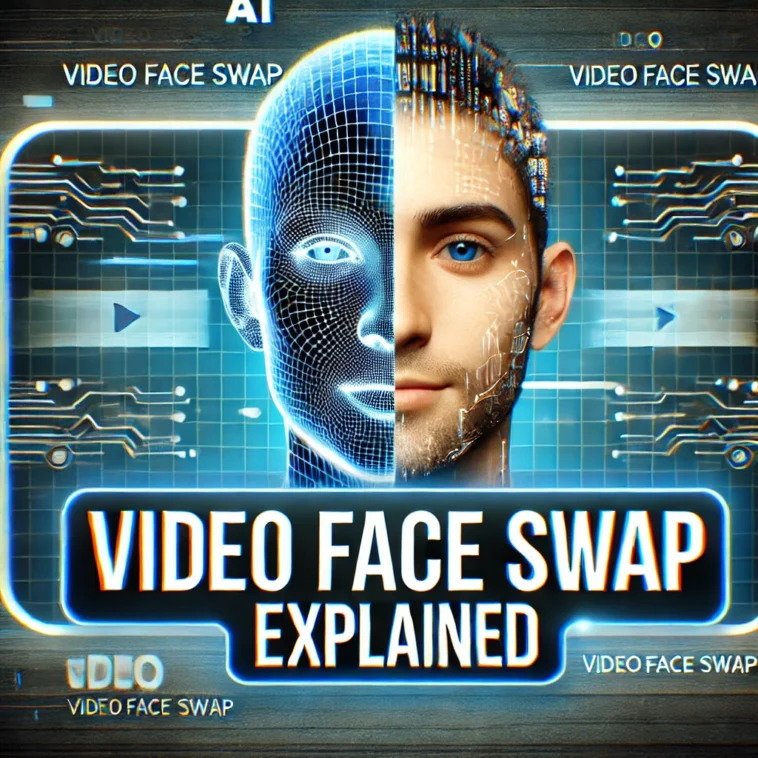Video face swap technology is redefining how we create, edit, and interact with video content. By seamlessly replacing one person’s face with another in motion, it offers unprecedented possibilities in entertainment, marketing, and education while raising ethical concerns. This article examines how video face swap works, its applications, and its implications for society.
What is Video Face Swap?
Video face swap technology uses artificial intelligence (AI) and deep learning to map and replace facial features in video footage. Unlike static image face swapping, video face swap ensures that facial expressions, lighting, and movements match the target footage. This real-time alignment makes the technology both revolutionary and technically complex.
How Does Video Face Swap Work?
The process of creating a video face swap involves several key steps:
- Face Detection and Tracking:
- Advanced algorithms, such as those using convolutional neural networks (CNNs), identify facial landmarks like the eyes, nose, and mouth in each frame of a video.
- These landmarks are tracked throughout the video, even during movement.
- Face Mapping:
- AI aligns the source face to match the target face’s size, angle, and expressions.
- Face Replacement and Blending:
- Textures, skin tones, and lighting from the source face are seamlessly integrated onto the target face.
- High-resolution rendering ensures smooth transitions and realistic results.
- Post-Processing:
- The final video is refined with color grading, noise reduction, and adjustments for continuity.
Popular tools like DeepFaceLab, FaceApp, and Avatarify employ these methods, offering a range of capabilities from casual use to professional-grade results.
Applications of Video Face Swap
1. Entertainment and Media
- Films and TV: Video face swap allows filmmakers to de-age actors, create digital doubles, or replace actors in scenes without reshooting.
- Social Media: Platforms like TikTok and Instagram encourage users to create engaging, face-swapped videos for entertainment and storytelling.
2. Advertising and Marketing
- Brands can create personalized ad campaigns where customers see their own faces in promotional videos, increasing engagement and relatability.
3. Education and Training
- Video face swap can simulate realistic scenarios for corporate training, medical education, and military exercises.
- In historical documentaries, it’s used to reimagine historical figures with incredible accuracy.
4. Gaming and Virtual Reality
- Players can swap faces with game characters or customize avatars in real-time for immersive gaming experiences.
Ethical Challenges and Controversies
While the benefits are clear, video face swap technology also poses significant ethical and social risks.
1. Privacy Violations
- Unauthorized use of someone’s face in videos can lead to identity theft, defamation, or emotional distress.
2. Deepfake Misuse
- Hyper-realistic deepfake videos have been used to spread misinformation, commit fraud, and manipulate public opinion.
3. Erosion of Trust
- In a world where videos can be easily altered, distinguishing real from fake becomes increasingly difficult.
Addressing Ethical Concerns
To mitigate misuse, the tech community and governments are implementing safeguards, including:
- AI Detection Tools: Organizations are developing tools to identify manipulated videos and flag deepfakes.
- Regulation and Oversight: Laws against malicious use of deepfake technology are being introduced globally.
- Public Awareness: Campaigns educate users about the risks and responsibilities associated with video face swap.
Future of Video Face Swap Technology
The future of video face swap technology is both exciting and complex. Innovations are expected in:
- Hyper-Realistic Rendering: AI will continue to improve, making face swaps indistinguishable from real footage.
- Real-Time Applications: Faster processing will enable live video face swaps for virtual meetings, streaming, and gaming.
- Personalization: Enhanced tools will allow users to customize video content easily, making it accessible for non-experts.
Conclusion
Video face swap technology is a powerful innovation transforming how we interact with visual media. From revolutionizing entertainment and marketing to posing ethical challenges, it represents the dual-edged nature of technological progress. As it becomes more sophisticated, balancing its creative potential with responsible use will be crucial for shaping a future where video face swap technology benefits society without compromising trust and authenticity.




